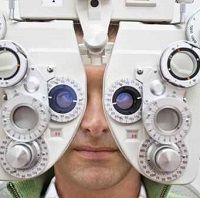Article
Patients with Psoriatic Arthritis at Higher Risk for Uveitis
Author(s):
Researchers found that not only are patients with psoriasis or psoriatic arthritis at higher risk for uveitis, the association is bidirectional: patients with uveitis are at increased risk for psoriasis and psoriatic arthritis

Analysis of 87,243 patient records indicates that people with psoriatic arthritis and/or psoriasis face an elevated risk of uveitis and that people with uveitis face an elevated risk of psoriasis and/or psoriatic arthritis.
The study team used administrative registries to pull data on all Danish adults diagnosed with psoriasis or uveitis between the 1997 and 2011. Using Poisson regression, team members calculated that patients with mild psoriasis were more than twice as likely as other comparable Danes to be diagnosed with uveitis (incidence rate [IR], 2.02; 95% confidence interval [CI], 1.99-2.06). Patients with severe psoriasis were nearly 3 times as likely as other Danes to come down with the disease, which is a serious inflammation of the pigmented layer of the eye (IR, 2.88; 95% CI, 2.33-3.56).
The risk was greater still among the 6,735 psoriatic arthritis patients in the study cohort. They were more than 5 times as likely as Danes with no psoriasis or psoriatic arthritis to develop uveitis (IR, 5.49; 95% CI, 3.36-8.96).
Further analysis showed that the association went both ways. Uveitis patients were about twice as likely as other comparable Danes to be diagnosed with mild or severe psoriasis at some later point in the study period and more than 4 times as likely as other Danes to receive a psoriatic arthritis diagnosis. Indeed, the IR for the reference population was 9.37 for mild psoriasis (95% CI, 9.30-9.45), 1.12 for severe psoriasis (95% CI, 1.10-1.15), and 1.04 for psoriatic arthritis (95% CI, 1.01-1.06). The IR for uveitis patients, however, was 15.51 for mild psoriasis (95% CI, 12.92-18.62), 2.66 for severe arthritis (95% CI, 1.72-4.13), and 4.25 for psoriatic arthritis (95% CI, 3.00-6.01).
“The overall incidence of psoriasis and psoriatic arthritis in patients with uveitis was low (n = 167), as was the incidence of uveitis in patients with psoriasis and psoriatic arthritis (n = 114). However, our results remained consistent even after adjustment for potential confounding factors, and they clearly indicate that patients with psoriatic skin disease, even in the absence of psoriatic arthritis, are at increased risk for uveitis and that the reverse relationship may also be of clinical importance,” the study authors wrote in JAMA Dermatology.
“Increased focus on eye symptoms in patients with psoriasis and psoriatic arthritis and on skin and joint symptoms in patients with uveitis may be appropriate.”
The authors of the new study wrote that several previous papers had noted that an unusually high number of their patients with 1 disease developed the other, but with the largest of those earlier works having only 200 subjects, none of them was large enough to even demonstrate a significant association let alone estimate its strength.
Even with its massive size, the new study suffers from several limitations. Some uveitis patients, for example, may have sought treatment from private ophthalmologists and thus escaped detection. The study population, moreover, was overwhelmingly made up of a small subgroup of Northern Europeans and incident rates of both diseases are known to vary among ethnicities.
All that said, the study authors believe the size of their study population and the strength of their findings demonstrates a genuine relationship. They even have some ideas about why the conditions are connected.
“The bidirectional relationship between psoriasis and psoriatic arthritis and uveitis suggests a shared pathogenic pathway,” they wrote, “and increased systemic inflammation may contribute to the observed relationship. In potential support of such a hypothesis, several studies have reported a beneficial effect of anti—tumor necrosis factor therapy on the frequency and severity of ocular attacks in patients with uveitis.”




